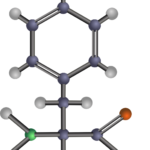In today’s rapidly evolving energy landscape, batteries have become central to numerous technological advances. From powering electric vehicles (EVs) and portable electronics to enabling the integration of renewable energy into power grids, batteries are shaping the future of how we generate, store, and use energy. For chemical engineers, understanding the latest developments in battery technology is not only essential but also opens exciting avenues for innovation, sustainability, and industrial advancement.
This article delves into the future of batteries, highlighting the critical trends, emerging technologies, and challenges chemical engineers must know to stay at the forefront of this transformative field.
The Growing Importance of Batteries in the Energy Ecosystem
Batteries are no longer niche components; they are becoming the backbone of a decarbonized and digitalized world. With governments worldwide pushing ambitious climate targets, electric mobility and renewable energy deployment are accelerating. However, renewable sources like solar and wind are intermittent by nature, requiring efficient and reliable energy storage solutions to balance supply and demand.
At the same time, consumer demand for portable, longer-lasting electronics continues to rise. Meeting these demands calls for batteries with enhanced energy density, faster charging, longer life cycles, improved safety, and reduced cost.
Chemical engineers are uniquely positioned to address these challenges because batteries fundamentally involve chemical reactions, material transformations, and scalable manufacturing—core aspects of chemical engineering.
Emerging Battery Chemistries: Beyond Lithium-Ion
Limitations of Current Lithium-Ion Technology
Lithium-ion batteries (LIBs) have dominated the market for the past three decades due to their high energy density, reliability, and declining cost. However, several issues limit their long-term viability:
Resource constraints: Lithium and cobalt, critical materials for LIBs, have limited availability and uneven geographic distribution, leading to supply risks and price volatility.
Safety concerns: The use of flammable liquid electrolytes presents risks of thermal runaway and fires.
Environmental impact: Mining and processing of lithium and cobalt have significant ecological and social consequences.
Performance plateau: The theoretical limits of current LIB chemistries cap further dramatic improvements in energy density and cycle life.
These limitations have driven extensive research into alternative chemistries, seeking batteries that are safer, cheaper, more sustainable, and capable of storing more energy.
Solid-State Batteries: The Next Frontier
Solid-state batteries (SSBs) replace the liquid electrolyte with a solid one, which can be made of ceramics, polymers, or glassy materials. This innovation offers several advantages:
Higher energy density: Solid electrolytes allow the use of lithium metal anodes, which have much higher capacity than graphite.
Improved safety: Solid electrolytes are non-flammable and reduce the risk of leakage and thermal runaway.
Longer lifespan: SSBs can endure more charge-discharge cycles without degradation.
However, SSBs face significant engineering challenges, including achieving stable interfaces between electrodes and electrolyte, maintaining ionic conductivity at room temperature, and scaling up manufacturing. Chemical engineers play a critical role in solving these problems through material design, process engineering, and interface chemistry.
Sodium-Ion Batteries: A Sustainable Alternative
Sodium-ion batteries (NIBs) are gaining attention due to the abundance and low cost of sodium compared to lithium. Although sodium ions are larger and heavier than lithium, leading to lower energy density, recent advances in cathode and anode materials have improved performance.
NIBs are particularly promising for stationary energy storage applications where weight and volume are less critical, such as grid-scale storage supporting renewable energy. Chemical engineers contribute by optimizing electrode formulations, electrolytes, and cell architectures to enhance cycle life and efficiency.
Lithium-Sulfur and Lithium-Air Batteries: High-Energy Prospects
Lithium-sulfur (Li-S) and lithium-air batteries offer theoretical energy densities multiple times higher than LIBs, making them attractive for applications requiring lightweight, high-capacity storage such as aviation and electric trucks.
Li-S batteries utilize sulfur cathodes, which are cheap and environmentally benign. The challenge lies in controlling polysulfide shuttle reactions that cause capacity fading.
Lithium-air batteries mimic combustion by combining lithium and oxygen to generate energy but suffer from poor cycle life and low efficiency.
Chemical engineers are researching novel catalysts, protective coatings, and electrolyte formulations to overcome these challenges and unlock the potential of these chemistries.
Materials Innovation: The Heart of Battery Advancement
Battery performance hinges on the properties and interactions of the materials used in electrodes, electrolytes, and separators. Innovations in these materials underpin improvements in capacity, safety, cost, and durability.
High-Nickel Cathodes
Increasing the nickel content in layered oxide cathodes boosts energy density, as nickel contributes to higher capacity. However, high-nickel cathodes tend to degrade faster due to structural instability and side reactions with the electrolyte.
Chemical engineers are developing doping strategies—introducing elements such as aluminum, manganese, or magnesium—to stabilize the crystal structure and improve cycling stability. Surface coatings and optimized synthesis methods also mitigate degradation mechanisms.
Silicon Anodes
Silicon has roughly ten times the theoretical capacity of graphite anodes, making it an ideal candidate for increasing battery capacity. Yet silicon undergoes dramatic volume expansion during lithiation (charging), leading to mechanical cracking and loss of electrical contact.
To address this, engineers are designing silicon-based composites with carbon matrices, nano-structured silicon particles, and flexible binders that accommodate volume changes while maintaining conductivity and mechanical integrity.
Solid Electrolytes
For solid-state batteries, solid electrolytes must combine high ionic conductivity with mechanical flexibility and chemical stability.
Ceramic electrolytes like garnet-type oxides offer excellent conductivity but are brittle. Polymer electrolytes are flexible but generally less conductive. Hybrid composites aim to balance these properties.
Chemical engineers synthesize novel electrolyte materials and develop fabrication methods such as thin-film coating and layer-by-layer assembly to create durable and efficient solid electrolytes.
Sustainability and Circular Economy: Battery Recycling and Green Manufacturing
With the rapid increase in battery production, sustainability has become a paramount concern.
Battery Recycling Technologies
Chemical engineers are developing advanced recycling processes that recover valuable metals—lithium, cobalt, nickel, manganese—from spent batteries. These include:
Hydrometallurgical methods: Using aqueous solutions to leach metals selectively.
Pyrometallurgical methods: High-temperature smelting to separate metals.
Direct recycling: Preserving cathode material structure for direct reuse, minimizing reprocessing.
Improving recycling efficiency and economics is vital to reducing environmental impact and securing raw material supply.
Green Manufacturing
Efforts to minimize the environmental footprint during battery production include:
Using renewable energy to power manufacturing facilities.
Developing aqueous or solvent-free processing routes to reduce hazardous waste.
Designing batteries with materials that are easier to recycle and less toxic.
Chemical engineers optimize process flows, implement life cycle assessments, and innovate sustainable material synthesis techniques.
Safety and Thermal Management: Protecting Batteries and Users
As battery energy density increases, managing heat generation and preventing failures becomes crucial.
Thermal Runaway Prevention
Thermal runaway—uncontrolled temperature rise leading to fires or explosions—is a key safety risk.
Chemical engineers develop flame-retardant electrolytes, thermal barriers, and separators to mitigate this. They also design Battery Management Systems (BMS) that monitor voltage, temperature, and current in real time to prevent unsafe operating conditions.
Advanced Cooling Systems
Efficient thermal management extends battery life and performance. Innovations include liquid cooling, phase-change materials, and heat pipes integrated into battery packs.
Scale-Up and Manufacturing Challenges
Moving battery innovations from the lab to market requires scalable, cost-effective manufacturing processes.
Chemical engineers design electrode coating lines, slurry formulation methods, cell assembly techniques, and quality control systems that maintain performance while reducing costs.
Supply chain considerations, such as raw material sourcing, logistics, and waste handling, also fall within their purview.
Conclusion: The Central Role of Chemical Engineers in Battery Innovation
The future of batteries is both exciting and complex. As the world races toward electrification and renewable integration, batteries must evolve to meet unprecedented demands for capacity, safety, sustainability, and affordability.
Chemical engineers sit at the heart of this evolution. Their expertise in materials chemistry, process engineering, sustainability, and systems integration enables them to design, optimize, and scale the next generation of battery technologies.
From developing solid-state materials and sustainable manufacturing processes to innovating recycling technologies and thermal management, chemical engineers will shape the batteries powering the future.















